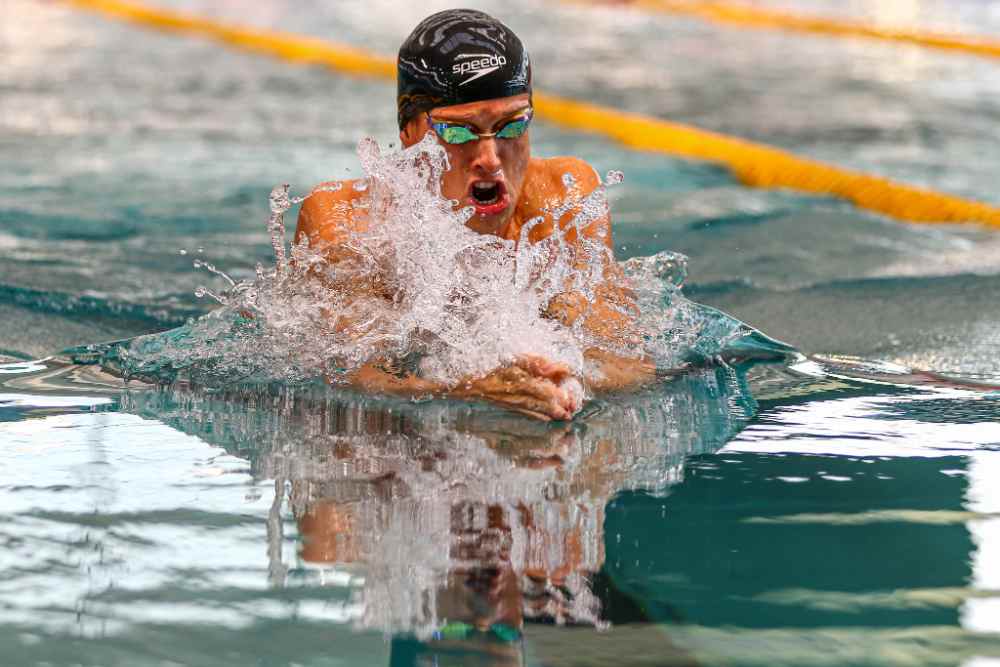When you want to teach your child how to swim without goggles, the first step is to remove their flotation devices. Your child must have an adult in the water with him or her when testing their swimming abilities.
Then, slowly introduce water on the face. While this may be scary at first, you should gradually introduce water on the face to your child.
Then, you can teach your child how to swim without goggles by taking the time to get used to it.
Eye drops are a lifesaver if you swim without goggles
When swimming without goggles, eye drops come in very handy. In some cases, they will reduce the irritation caused by chlorine and other elements in the water. This can lead to dehydrated and dry eyes, and you may even experience blurred vision. To avoid these problems, you should wear goggles whenever you go swimming. This will minimize the risk of eye infections while swimming without goggles.
Chlorine in swimming pools is a major cause of swimming eye infections. Chlorine prevents bacteria and mold from growing in public swimming pools. If you wear contact lenses, even if you think you’ve just contracted swimmer’s eye, you should immediately seek medical attention. Contact lenses are especially dangerous if you’re not wearing goggles when swimming. Use eye drops to treat your eyes before heading back to the pool.
Avoid dirty water
The best way to avoid infection when swimming without goggles is to stay away from dirty water. Although some pools contain chlorine, it’s still advisable to wear them to reduce the concentration of bacteria that can cause eye problems. Without goggles, you’ll be at risk of red, bloody eyes. You also run the risk of allergic reaction to chlorine. Goggles can prevent this from happening, but they don’t eliminate it completely.
Wearing goggles is the most important thing you can do to protect your eyes. If you swim without goggles, you can risk getting your eyes wet or getting them kicked by other swimmers. You’ll also need to keep an eye on where you’re going – it’s crucial to stay aware of which directions lead to deep water. If you’re in a busy pool, wearing goggles will ensure that you don’t get kicked by other swimmers.
Avoid intraocular pressure
Wearing swimming goggles can increase intraocular pressure, a condition that can lead to irreversible eye damage. Researchers found that swimmers with goggles experienced an average increase of 4.5 points in intraocular pressure. The normal range is between ten and twenty-one points. Anything above that range can cause damage to the optic nerve. Here are some tips to keep your eyes healthy while swimming without goggles.
To lower the risk of developing intraocular pressure, don’t wear goggles while swimming. This is because the seal around the periorbital tissue of the orbit reduces blood flow to the eye. In a study, swimmers who wore goggles experienced an average IOP increase of nine mm mercury per eye. Since intraocular pressure is normally fifteen millimeters-high, this increase represented a six-seven percent increase in eye pressure. Some individuals experienced a seventeen-mm-hg increase.
Avoid putting your face in the water
Some people choose to swim without goggles. Although this isn’t very difficult, you should avoid putting your face in the water until you are completely comfortable with the sensation. Before you swim without goggles, try splashing water on your face for a few seconds to acclimatize your eyes to the water. It may seem silly, but it will help you avoid any eye irritation later on.
It’s also a good idea to swim behind someone wearing goggles so they can check your bearings. While swimming behind someone without goggles, try to keep calm. Be sure that you’re not causing any discomfort to them and that they’re not going to be injured. Remember that you can surface at any time and apologize if they accidentally see you’re swimming without goggles.
Wearing goggles in the pool encourages swimmers to put their face in the water
Adding goggles to swim lessons can be beneficial to kids who are prone to sensory issues and are not as comfortable putting their face in the water. However, children who are sensitive to water will often remove their goggles right away and wipe the water from their face. Also, goggles can trigger tension and pressure in children who are sensitive to the water. Keeping these issues in mind, it’s best to add goggles only after the swimmer has overcome the fear of drowning.
It’s possible to swim without goggles. Some swimmers prefer to wear goggles under their caps. Others worry that the goggles will fall out and fill with water, making it impossible to see during the race. Katie Ledecky, a gold medalist at the 2012 Summer Olympics, wears goggles under her cap. Some swimmers wear prescription goggles, and many wear them only in the pool.
Wearing goggles in the ocean helps protect eyes
When in the ocean, wearing goggles is crucial for your safety. They protect your eyes from the harsh rays of the sun. Goggles may seem like an unnecessary accessory, but they help protect your eyes from further damage. The first step is to find a pair that fits properly. A pair that fits poorly could squeeze your eyes and damage them permanently. Also, goggles that are too big or too small may be uncomfortable, and you’ll most likely lose them during your time in the water.
Seawater and pool water contain chemicals that can irritate your eyes. The pH balance in a pool is also not balanced, so the chemicals can cause irritation. Ocean water contains high amounts of salt, which can dehydrate your eyes. Wearing goggles will prevent water from getting into your eyes and causing irritation or pain. It’s also important to wear eye drops while swimming to keep your eyes hydrated.

Beau Cormier is a former NCAA I swimmer, US Open National finalist, and swim nerd. When not swimming or working for a data company, you can find him running the trails of the Pacific Northwest with his wife and dogs.
